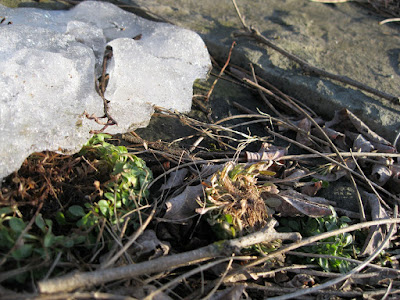This Prairie Fire is an interesting mix of browned old leaves and green new growth. Depending on individual definitions of native plants, this Arizona specimen might not make the cut. We know gardeners that limit their interest to plants found naturally in a small corner of Otsego County.
Thursday, March 25, 2021
Warm Days And Light Rain
Friday, March 19, 2021
First Open Flowers
Wednesday, March 17, 2021
Fall Formed Flower Buds
Wednesday, March 10, 2021
56 Degrees In The Shade
Woodland Phlox may solve a huge problem for us. It grows with reckless abandon and will soon fill a respectable area with yearlong growth. Many of our shade garden plants are more reserved and leave much ground free of desirable growth. After a winter of covid lockdown, it was simply wonderful to find living plants growing where just yesterday only snow could be seen.
Friday, March 5, 2021
Spring In 15
Rose Campion is a European native. It prefers poor stony ground to carefully enriched garden soil. Here it has seeded itself in the stone paths adjacent to garden beds where it spreads impressively. Move it to rich garden soil and it will flower once then vanish. Its bright purple flowers look great next to its whiteish green leaves.
This bright green belongs to my arch enemy Quack Grass. Despite our decades long battle, this plant will quickly take over my gardens when I am no longer able to kneel on the ground to remove it. Still, its early growth is bright, green and strong.
If anyone needs to mark the location of their septic tank, now is the time. No close placement to basement walls melted this snow. An underground organic heat source did that job. That strange dark shape in the foreground is the end of a low stone wall. Sunlight and heat absorbing stone melted some snow here.

























